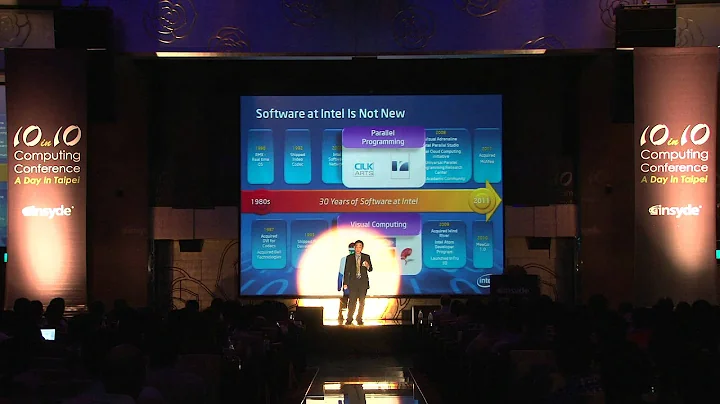The True Cost of Antialiasing: Impact on Gaming Performance
Table of Contents
- Introduction
- The Importance of Graphics Cards in Gaming
- Understanding Anti-Aliasing
- What is Anti-Aliasing?
- How Does Anti-Aliasing Work?
- The Impact of Anti-Aliasing on Gaming Performance
- Types of Anti-Aliasing
- No AA
- Super Sampling Anti-Aliasing (SSAA)
- Fast Approximation Anti-Aliasing (FXAA)
- Subpixel Morphological Anti-Aliasing (SMAA)
- Benchmark Tests
- Tomb Raider Benchmark
- Rise of the Tomb Raider Benchmark
- Performance Impact of Different Anti-Aliasing Settings
- Factors to Consider when Choosing Anti-Aliasing Settings
- Performance vs. Image Quality
- GPU Load and Thermals
- Noise Levels
- Conclusion
- Your Gaming Experience Matters
- What's Next for Graphics Cards?
- Additional Resources
The Impact of Anti-Aliasing on Gaming Performance
In the world of gaming, graphics cards are deemed the most critical component of any gaming system. They not only enhance the overall visual experience but also determine the smoothness and Clarity of your gameplay. However, there's one aspect that often sacrifices gaming performance – anti-aliasing. In this article, we will explore the different types of anti-aliasing and their impact on FPS (frames per Second), as well as delve into the various factors to consider when choosing anti-aliasing settings. So let's dive in and discover the true cost of anti-aliasing!
Understanding Anti-Aliasing
What is Anti-Aliasing?
When it comes to gaming graphics, anti-aliasing is a processing method that aims to reduce the jagged edges of images displayed on your screen, commonly known as "jaggies." As your screen consists of square pixels, the lower the resolution, the more noticeable these jagged edges become. Anti-aliasing works by simulating a higher resolution and applying processing techniques in real-time to create a smoother and more rounded image.
How Does Anti-Aliasing Work?
There are various types of anti-aliasing techniques available, each with its own approach and level of impact on gaming performance. Super sampling anti-aliasing (SSAA) is an older technology that produces high-quality results but can significantly decrease FPS due to its demanding processing requirements. Fast approximation anti-aliasing (FXAA) is a more lightweight option that provides a balance between image quality and performance. Subpixel morphological anti-aliasing (SMAA), on the other HAND, is a newer type of anti-aliasing that delivers impressive results with minimal impact on FPS.
The Impact of Anti-Aliasing on Gaming Performance
Benchmark tests using the Tomb Raider and Rise of the Tomb Raider games reveal the impact of different anti-aliasing settings on performance. It is evident that enabling anti-aliasing imposes a taxing workload on your graphics card. The more processing required, the less time your GPU has to send the image to your monitor, resulting in a drop in FPS. However, the extent of the impact varies depending on the chosen anti-aliasing type and settings.
Types of Anti-Aliasing
To better understand the cost of anti-aliasing, let's explore the different types available and their varying levels of performance impact.
No AA
The baseline setting, No AA, refers to turning off anti-aliasing entirely, providing the best performance but sacrificing image smoothness. This option is ideal for gamers who prioritize FPS over visual quality.
Super Sampling Anti-Aliasing (SSAA)
Super sampling anti-aliasing (SSAA) is an advanced technique that renders images at a higher resolution than the monitor's native resolution and then downscales them. This method offers the most visually appealing results but comes at a significant performance cost, making it suitable for high-end systems with ample GPU power.
Fast Approximation Anti-Aliasing (FXAA)
Fast approximation anti-aliasing (FXAA) is a lightweight and fast method that works by analyzing the pixels on the screen and smoothing out the edges. Although FXAA offers decent image quality and has minimal impact on performance, it may not completely eliminate all jagged edges.
Subpixel Morphological Anti-Aliasing (SMAA)
Subpixel morphological anti-aliasing (SMAA) is a modern anti-aliasing technique that provides excellent image quality while maintaining a relatively low performance hit. SMAA applies the anti-aliasing effect to the entire screen, resulting in smoother edges and a more visually-pleasing gaming experience.
Benchmark Tests
Benchmark tests using the Tomb Raider and Rise of the Tomb Raider games were conducted to measure the performance impact of different anti-aliasing settings. By analyzing the results, we gain valuable insights into the relationship between anti-aliasing and gaming performance.
Factors to Consider when Choosing Anti-Aliasing Settings
When deciding on the appropriate anti-aliasing settings for your gaming experience, several factors must be taken into account.
Performance vs. Image Quality
Finding the right balance between performance and image quality is crucial. While higher anti-aliasing settings produce smoother images, they come at the cost of reduced FPS. It is essential to experiment with different settings to achieve the desired level of visual quality without compromising gaming performance.
GPU Load and Thermals
Enabling anti-aliasing significantly increases the workload on your graphics card. As a result, it generates more heat, leading to increased GPU temperatures. Ensure that your system's cooling solution is capable of handling the additional load to prevent thermal throttling and potential performance issues.
Noise Levels
As anti-aliasing causes your GPU to work harder, the fans tend to spin at higher speeds, resulting in increased noise levels. Consider the noise factor when selecting anti-aliasing settings, especially if you prioritize a quiet gaming environment.
Conclusion
In conclusion, anti-aliasing plays a crucial role in enhancing the visual quality of your gaming experience. However, it is not without its trade-offs. By selecting the right type and settings based on your system's capabilities and personal preferences, you can strike a balance between image quality and performance. Remember, an informed decision will ultimately result in a more enjoyable gaming experience.
Your Gaming Experience Matters
To optimize your gaming experience, it is crucial to consider various factors, including your system's specifications, Game requirements, and personal preferences. By staying informed about the latest advancements in graphics cards and anti-aliasing technologies, you can make informed decisions that result in a seamless and visually stunning gaming experience.
What's Next for Graphics Cards?
As technology continues to evolve, so does the world of graphics cards. Advancements in hardware and software, such as ray tracing and DLSS (Deep Learning Super Sampling), are reshaping the gaming landscape. Stay tuned for exciting developments that push the boundaries of visual fidelity and performance in your favorite games.
Additional Resources
To further explore the world of graphics cards and anti-aliasing, here are some helpful resources:
FAQs
Q: Does enabling anti-aliasing affect all games in the same way?
A: No, the impact of anti-aliasing on gaming performance may vary depending on the game's optimization, your system's specifications, and the chosen anti-aliasing settings.
Q: Can I use anti-aliasing on lower-end graphics cards?
A: Yes, you can still utilize anti-aliasing on lower-end graphics cards, but you may need to adjust the settings to find the right balance between performance and image quality.
Q: Are there any alternatives to traditional anti-aliasing techniques?
A: Yes, there are alternative anti-aliasing techniques such as temporal anti-aliasing (TAA) and multisample anti-aliasing (MSAA), each with its own strengths and weaknesses.
Q: Does anti-aliasing impact virtual reality (VR) gaming?
A: Yes, anti-aliasing can affect VR gaming performance. However, some VR headsets and games implement their own anti-aliasing techniques specifically designed for the VR environment.
Q: Can anti-aliasing eliminate all jagged edges in games?
A: While anti-aliasing significantly reduces jagged edges, it might not completely eliminate them, especially in games with lower resolutions or poorly optimized graphics.
Q: Are there any new developments in anti-aliasing technology?
A: Yes, technologies like DLSS and AMD FidelityFX Super Resolution are revolutionizing anti-aliasing by using advanced algorithms and artificial intelligence to provide better image quality with minimal performance impact.
 WHY YOU SHOULD CHOOSE TOOLIFY
WHY YOU SHOULD CHOOSE TOOLIFY

























